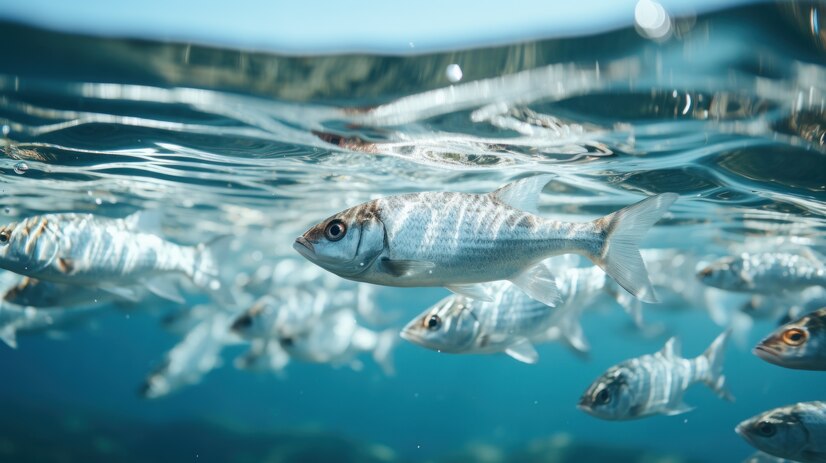Introduction
Feeding fish high-quality food is a critical requirement in their development, good health, and productivity. Most commercial fish feeds are readily available on the market, but artificial fish food can be manufactured in-house at a cheaper cost. In this blog, you will follow a series of steps on how to come up with nutritious homemade fish food that will perfectly match fishery farms, together with their benefits, ensuring that your fish thrive and the operation of the farm will be sustainable in the long run.
1. Understand the Nutritional Need of Fish
Apart from the recipes, fish need a general balanced diet that caters to:
- Proteins: necessary to cater to growth and repair of tissues
- Fats: they provide energy and help in the functions of the cell
- Carbohydrates: an extra reserve food
- Vitamins and minerals: required in almost all the activities done in the body, for instance, immunity to support and the formation of bone
Different species will have different needs, so you must create a homemade diet specific for the fish.
Benefits of Homemade Fish Food
Making your own fish food has many benefits. These include the following:
- Saves the cost as you make your feed with available ingredients in your local area.
- Diet can be tailored based on specific fish species and different life stages
- Assurance that harmful additives are not a part of the food, only good quality food
- Sustainable and environmental-friendly ingredients
3. Basic Ingredients for Homemade Fish Food:
Here’s a list of common ingredients you can use to make fish food at home:
- Protein Sources: Fish meal, shrimp meal, soybean meal, earthworms, insects, eggs.
- Carbohydrate Sources: Wheat flour, cornmeal, rice bran, oats.
- Fat Sources: Fish oil, vegetable oil, flaxseed oil.
- Vitamins and Minerals: Spinach, carrots, peas, garlic, seaweed, vitamin supplements.
- Binding Agents: Gelatin, agar-agar, and flour to hold the mixture together.
4. Recipe 1: General Fish Food Pellets
Ingredients:
- 2 cups fish meal
- 1 cup soybean meal
- 1 cup wheat flour
- 1 cup cornmeal
- 1 cup vegetable oil
- 1 cup chopped spinach
- 2 carrots, grated
- 2 cloves garlic, minced
- 1 teaspoon vitamin supplement powder
- 1 tablespoon gelatin
Instructions:
Combine fish meal, soybean meal, wheat flour, and cornmeal in a large bowl.
Combine vegetable oil, chopped spinach, grated carrots, minced garlic, and vitamin supplement powder; mix well.
Prepare Gelatin: Dissolve it in some warm water and follow instructions on the package. Add to the mixture to act as a binding agent.
Form Pellets: Shape the mass of mixture into small pellets by using your hands or a pellet machine.
Dry Pellets: Spread the pellets out onto a baking sheet and air-dry in a well-ventilated area or use a food dehydrator.
Store: Pellets should be allowed to be cooled and dried completely before they are stored. Store them in an airtight container in a cool and dry place.
5. Recipe 2: High-Protein Fish Food Paste
Ingredients:
- 1 cup shrimp meal
- 1 cup earthworm meal
- 1 cup of oats
- 1 cup of rice bran
- 2 eggs
- 1 cup of peas, chopped
- 1 cup dried seaweed, crushed
- 1 teaspoon fish oil
- 1 tablespoon of agar-agar
Method:
Blending of Dry Ingredients: Shrimp meal, earthworm meal, oats and rice bran are taken in a food processor and blended to a fine mixture.
Add wet ingredients: add eggs, chopped peas, crushed seaweed, and fish oil; blend until the mixture is smooth.
Prepared Agar-Agar: Agar-agar needs to be dissolved in warm water; this is the direction on the package. Agar-Agar should then be added to the mixture as a binder.
Form the paste: You can simply pour the mixture into a mold or even spread it on a baking sheet as you prefer.
Set and Dry: Allow the paste to set and become dry, either in a cold, dry place or you can use a dehydrator for faster results.
Store: Cut the dried paste into small pieces and store in an airtight container.
6. Feeding and Storage Tips:
Portion Control: Feed fish small portions at a time to prevent overfeeding and water pollution.
Storage: Keep homemade fish food in a cool, dry place, not wet and heated, in order to keep the quality right.
Monitoring: Be on the lookout for the fish’s health and growth for the necessary adjustment of the diet.
Conclusion:
You can make fish feed at home for a fishery farm. It’s rewarding, inexpensive, and assures your fishes get the best feeds. This can be achieved by first understanding what exactly it is that they require, then acquiring good quality, yet locally obtained, ingredients in order to make customized feeds that would help sustain healthy growth and leverage the farming practice. Just get experimenting with recipes and ingredients until you get the perfect blend for your fish.

